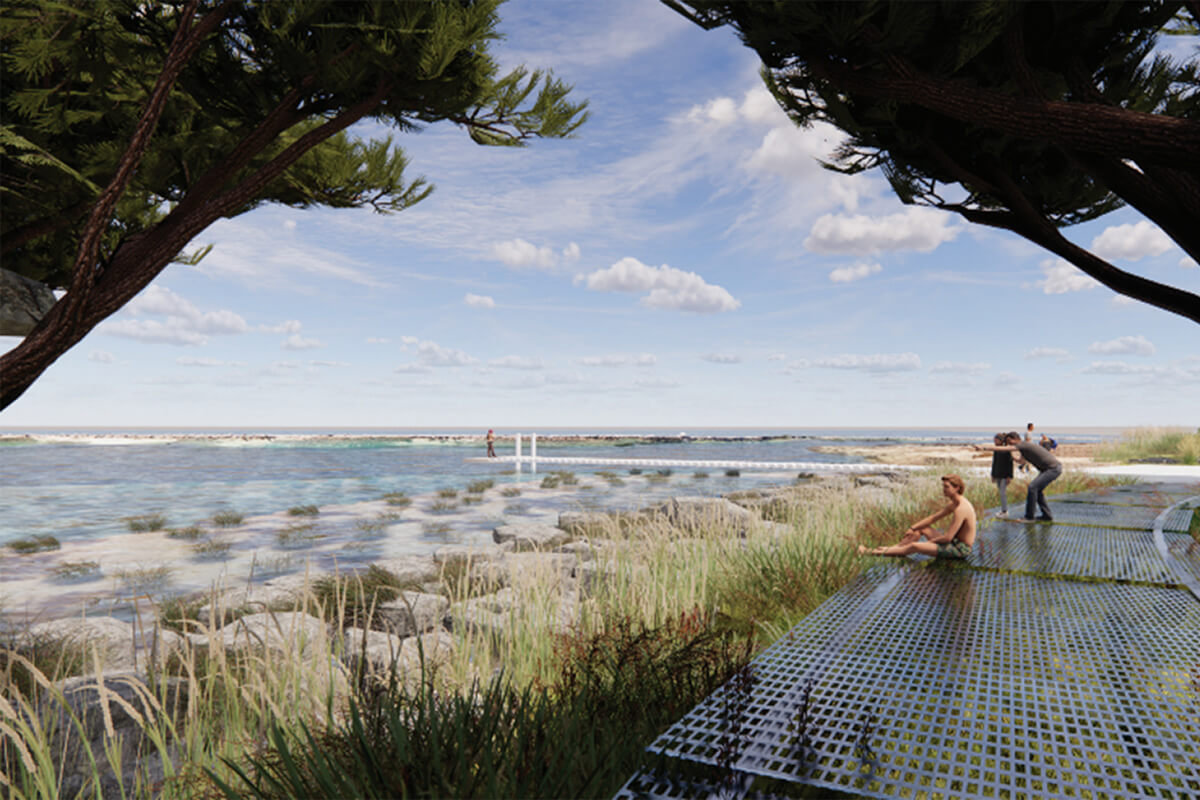Project proponents: Eurobodalla Shire Council, The Nature Conservancy and NSW Department of Primary Industries – Fisheries
Location: Intertidal land on the foreshore of Wagonga Inlet, Narooma. Eurobodalla local government area / Yuin Country
Coastal management area(s): Coastal environment area and coastal use area
The Wagonga Inlet Living Shoreline project restores the foreshore and nearby estuary environments in Narooma. The project area borders a Habitat Protection Zone within Batemans Marine Park, where threatened and migratory species live.
The project helps the site adapt to coastal hazards and protects and enhances local ecosystems. It also improves the enjoyment of the area for locals and tourists.
The project replaced a failing rock revetment wall and informal access points with a 'living shoreline'. This consists of a reshaped bank, revegetated shoreline and an elevated boardwalk, jetty and pontoon. The project also restored an oyster reef, rehabilitated saltmarsh and planted vegetation.
NSW Coastal Design Guidelines application
This case study shows how you can apply chapter 4.2 'Design guidance for the natural environment' from the NSW Coastal Design Guidelines 2023 (PDF, 9.2 MB).
Objectives
Objective 4.2.1: Base considerations on a hierarchy of landform, then landscape, then built form
The project used an elevated walkway made of material that allows water to filter through the surface. This will accommodate natural and dynamic coastal processes. By reshaping and restoring the foreshore, the project also reinforces natural landforms and restores ecological integrity.
Objective 4.2.2: Protect and enhance water quality, hydrological systems and coastal processes
Upgrading stormwater infrastructure to introduce gross pollutant traps improves water quality outcomes in the marine park. Foreshore re-naturalisation will support natural coastal processes.
Objective 4.2.3: Identify, protect and enhance sensitive coastal ecosystems and threatened ecological communities
Granite platforms, steps and a raised walkway formalised access to Narooma Flats while minimising disturbance to saltmarsh areas. Using mesh for the walkway reduced shading of saltmarsh and seagrass areas.
The project involved restoring the foreshore. This included:
- restoring intertidal and subtidal oyster reefs
- planting vegetation
- expanding and connecting existing saltmarsh areas.
The design allows for saltmarsh to gradually migrate upslope in response to sea level rise.
Objective 4.2.4: Ensure that the natural coastal environment is integrated into built coastal environments
The project restores and emphasises the presence of the natural foreshore. It involved replanting with local propagation material and seed from Wagonga Inlet.
Objective 4.2.5: Use nature-based solutions as the first option to address environmental challenges, avoiding hard engineering solutions where possible
The project replaced the existing rock revetment with:
- a re-naturalised zone of saltmarsh
- a vegetated buffer
- some areas of granite armour stone.
This design adopted many principles from the Environmentally Friendly Seawalls Guide. It maximised the use of riparian and estuarine vegetation, adopted a low slope and created habitat diversity and complexity. This included benches and steps that provide vertical and horizontal habitat.
